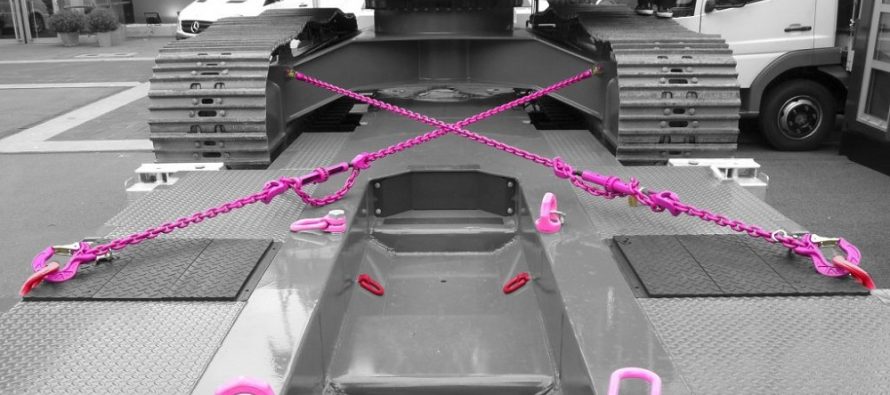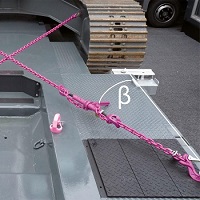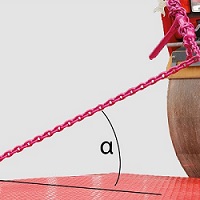Direct and diagonal lashing with Rud system

Related Articles
When it comes to direct lashing, we differentiate mainly between two types: inclined lashing and diagonal lashing. Diagonal lashing is by far the most commonly used method. This is why we focus here on this type of direct lashing. Diagonal lashing is always preferable to tie-down lashing since no special static pre-tensioning forces need to be applied. In contrast to tie-down lashing, the lashing equipment/lashing points are only subjected to light pre-tensioning. The lashing equipment is only subjected to higher loads if the forces occur as a result of strong braking, starting or intensive cornering.
It is important that a number of characteristics are taken into account for diagonal lashing. This concerns the arrangement and positioning of the lashing lines in relation to the respective loading directions. Two angle plans (horizontal and vertical) must be taken into account for diagonal lashing and thus two angles must be defined. The two figures are intended to facilitate a clear definition of the angles to be taken into account.
 Horizontal angle β | Vertical angle α
Horizontal angle β | Vertical angle α
The angles α and β play a decisive role in the calculation. The angle β is the horizontal angle between an imaginary straight line from the lashing point towards the driver’s cab and the chain strand. The vertical angle α is the angle between the loading area and the chain strand. RUD chains offer an easy to use calculation aid with an angle meter, which makes the determination of angles α and β child’s play.
 Using this calculation aid, you can very quickly and safely select the correct lashing chain. If β becomes very small, there will be a very high load on the lashing equipment when cornering. If β becomes very large, there will be a very high load during braking/acceleration. In the ideal case, β should be between 20° and 45°.
Using this calculation aid, you can very quickly and safely select the correct lashing chain. If β becomes very small, there will be a very high load on the lashing equipment when cornering. If β becomes very large, there will be a very high load during braking/acceleration. In the ideal case, β should be between 20° and 45°.
In extreme cases (if angle β = 90°), an indefinitely high force would theoretically occur in the lashing equipment. This should illustrate that extreme crosswise lashing as securing in the direction of travel, which can often be seen on construction vehicles or rollers, is the most unfavorable type of load securing in the direction of travel.
With an angle α, the optimal lashing force result is given, between 0° and 30°. As the angle α increases, so does the load on the lashing equipment, which theoretically increases to infinity with an angle of 90°.







